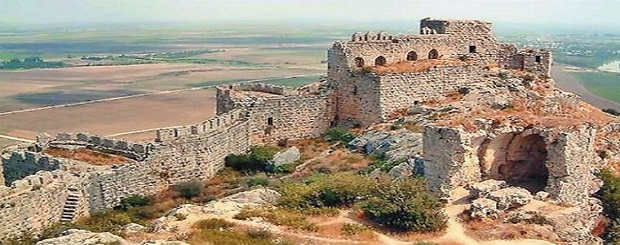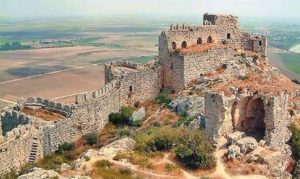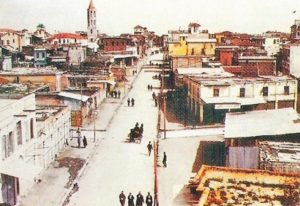
Adana – History of the Armenian city.
Home / Armenian melody / Adana – History of the Armenian city.
Tuesday, February 19 2019
Modern Adana is one of the rapidly developing cities in Turkey. It is unlikely that its current residents know the true history of the city, which was one of the main settlements of Cilicia and, until the 1930s, played an exceptional role in the lives of Armenians of Cilicia. Even after the massacre, pogroms, deportations and attempts to finally get rid of the Armenian heritage in Adana and in almost all regions of the once powerful Armenian Cilicia, an Armenian trace is felt.
As in other major cities, Armenian educational and religious institutions also operated in Adana. Together with Mersin and Tarson, Adana was one of the key cities in the region, so many educational institutions were concentrated in the city. Armenian newspapers were published in Adana. There were three gymnasiums under the Armenian Apostolic Church. There were two higher educational institutions in Armenia.
Catholic and Protestant Armenian institutions also functioned, which were considered the best not only in Cilicia, but also in the Aleppo region. Western missionaries particularly actively spread their activities in Adana, therefore there were several Armenian-French and Armenian-English educational institutions in the city. The local Armenian youth, in addition to Turkish, were fluent in French and English.
Hotels and banks, as well as many enterprises belonged to local Armenians. The city published the Armenian newspapers Adana, Kilikia, Ayi Dzayn, Tavros and others, which were funded by local philanthropists and Armenian charity organizations.
Before the monstrous massacre of Armenians in Adana in 1909, there were 45,000 people living in the city, of whom 13,500 were Armenians, the rest were Turks, Arabs (Muslims and Christians), Greeks, Assyrians, Jews, Circassians, Kurds, and Levantins. Armenians lived in the central quarters of the city, in the south and west of Adana. The local Armenian population was divided into followers of the Armenian Apostolic Church, as well as Catholics and Protestants.
Armenians – Catholics and Protestants had one church each and were in close relations with the local Levantine population, especially with the French and Genoese. The Armenian Apostolic Church had 4 churches: Minas, Amberd, Holy Mother of God and Stepanos. During the reign of Abdul Hamid, as in the times of Republican Turkey, everything was done at the state level to change the ethno-demographic picture of Cilicia and, in particular, of Adana.
The main Muslim element in the city were the Turkmen and Yuruki, who led a semi-nomadic lifestyle, as well as the Ottoman clan Ramazan oglu, whose representatives occupied high positions in the city. However, in order to change the ethnic and religious face of Adana, the Balkan Turks were resettled from various regions of the Ottoman Empire, as well as Cretan Islamized Greeks, whose number prevailed in some quarters of the city.
In addition, the Ottoman government in Adana resettled Circassians, Chechens, Dagestanis and Abkhazians who settled on the outskirts of the city, in areas where the main population was Armenians. As a result of the state policy, part of the local Armenian population, being persecuted by alien Turkish data, was forced to relocate inland and even migrate to the United States and Western Europe.
But even after a long outflow of Armenians from the city of Adan, it was still an Armenian, until the bloody massacre of 1909, when more than 10,000 Armenians were killed. 1,200 Armenian houses (out of 2,000), 6 churches, 16 schools and educational institutions were burned down in the city. Until now, experts have not been able to assess the real loss of the Armenian capital of the city. Hundreds of homeless Armenians sought refuge in the vicinity of the city.
Local Armenians managed to organize self-defense only three blocks away. The fact that the massacres of Armenians and the pogroms were organized were evidenced by hundreds of archival documents of that time. Western missionaries, diplomats, and journalists witnessed the monstrous massacre of Armenians in Adana.
Some of them were so shocked by what was happening that they left the city in the hope of conveying information to the world community about the events in Adana. The Russian ambassador in Constantinople, Zinoviev, wrote that the peaceful Armenian population was exterminated in an atrocious manner. French Catholic missionary father Benoit recalled with horror the massacres and pogroms of Armenians, making up the chronology of events.
The correspondent of the “New York Herald” G. Gibbons wrote about the main slogan of the murderers, who shouted: “Cut, cut these gyaurov.”
In addition to the Armenians, a part of local Christians – Arabs, Assyrians and Greeks were killed. The Christian quarters of Adana were completely destroyed – Ersel, Jamuz, Memerli, Idadiye, Shabania, the area of the Catholic Church of the Latin rite. Surprisingly, in the eyes of the world community of that time, the Young Turks destroyed the Armenian population with impunity for a whole month, and no country condemned these events. The English journalist Benson found a direct connection between the events in Adana and the genocide of 1915, noting that the events in Adana were the herald of the future genocide and that the Young Turks were engaged in an “experimental policy” in the matter of exterminating the Armenians.
One way or another, the Turkish government achieved the expected result. Exhausted Armenian population tried to either leave the region, or, remaining in their homeland, felt completely alien. The Turks after these events became particularly aggressive towards Christians in general. Representatives of the Ottoman Turks were appointed heads of the city council, who became the ethnic majority after the extermination of Armenians in 1909.
The Armenians of Adana tried to restore the Armenian quarters of the city, but the genocide of 1915 finally destroyed their hopes. After the Armenian Genocide of 1915, the majority of the Armenian population of the city perished at the hands of the Young Turks. As in all regions of Anatolia and Western Armenia, in parallel with the killings and deportations, significant groups of the Armenian population were Islamized.
In Cilicia, Islamized groups of Armenians survived in Zeytun, Marash, Tarson and Adana. After the proclamation of the Turkish Republic and during the rule of Ataturk, the situation of the surviving Armenians of Turkey remained difficult. Ataturk and his predecessors tried to finally oust the Armenian element from Turkey.
It is noteworthy that the Turkish intelligence of that time (19371959) had information that in all the provinces of the Turkish Republic ethnic Armenians remained, including followers of the Armenian Apostolic Church, hidden Armenians (crypto-Armenians), Islamized Armenians (Kurdish, Arabized, Turkized), and also Armenians who survived with the people of Zaza in the Dersim region. In subsequent years, Turkish foreign intelligence continued to identify the places of residence of the above-mentioned Armenian groups. In the 1970s The Turkish government is resettling here Turkic groups from Afghanistan, China and India.
Today, Adana is one of the most densely populated cities in Turkey. The city is home to 1,572,000 people. The city is divided into 5 large districts, where representatives of several ethnic groups live. The Islamized Greeks of the island of Crete, Turkmens and the Turks proper constitute the majority of the population in two districts of the city.
The eastern part is inhabited by Arabs (Uregir region). A large Kurdish community appeared in the city. In Adana settled the so-called Gypsies – the symphony, the other ethnic groups live scattered. As for the Armenians of Adana, there are no followers of the Armenian Apostolic Church in the city. Numerous sources report that among the Alevi Arabs and Kurds of Adana there are Armenian families who secretly profess Christianity.
According to the data of the Protestant organizations of Turkey, many of the city’s Protestants are also of Armenian origin. Two Armenian old churches turned into mosques. The Adana Central Bank is also located in the Armenian church. Another Armenian church serves members of the city’s Catholic community. Part of the city has preserved the old Armenian buildings, and the time here seemed to freeze in anticipation of justice.
Unfortunately, the Armenian massacre in Adana has not yet been sufficiently studied. And finally, how does Armenians perceive the events in Adana a hundred years later? Adana is silent for now.
Out of line
Arman Hakobyan


ORIGINE SOURSES- nashaarmenia.info/2019/02/16/адана-история-армянского-города/?
